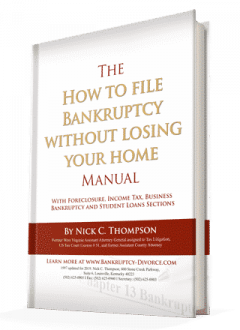Understanding Wage Garnishment
What is wage garnishment?
Wage garnishment is a powerful debt collection tool that allows creditors to deduct a portion of an individual’s wages directly from their paycheck to repay a debt. This process is court-ordered, meaning the creditor has to obtain a court order to garnish wages after getting a judgment.
A wage garnishment directs the employer to withhold a specific amount from an employee’s earnings and send it directly to the creditor.
Wage garnishments, which may not require a court judgment, include federal income taxes and federal student loans. Bankruptcy will normally stop a wage garnishment, and sometimes, you may be able to file a claim for exemption. Understanding how wage garnishment works can help you take the necessary steps to protect your income and financial stability.
Types of debts that can be garnished
Not all debts are subject to wage garnishment, but several common types are. These include:
- Child support and alimony: These are priority debts which can be paid higher portions than the standard 25% which most unsecured debts attach. Priority debts that issue garnishment orders can result in significant portions of your wages being garnished.
- Unpaid federal and state income taxes: The IRS and state tax agencies can garnish your wages without a court order.
- Federal student loans: If you default on your federal student loans, the government can also garnish your wages to recover the debt without a court order.
- Court judgments: Most creditors including private student loans have to sue you and win to collect. They can obtain a court judgment to garnish your wages for unpaid bills, such as credit card debt.
Remember, some creditors, like taxes, federal student loans, child support, or alimony, don’t need to go through the court system to get a wage garnishment. This means they can act more quickly to garnish your wages, making it crucial to address these debts promptly.
How wages are garnished
The wage garnishment process typically involves several steps:
- Creditor Notification: A creditor sends documentation to your employer, often through the local sheriff, directing your employer to withhold a specific amount from your paycheck as a result of you losing a lawsuit. You may or may not have been served. Some states will use a warning order attorney who merely sends notice of the lawsuit to you last known address.
- Employer Compliance: Your employer is legally required to comply with the court order and withhold the specified amount from your paycheck. If the employer fails to withhold wages, the employer can become liable for the debt.
- Payment to Creditor: The withheld amount is then sent to the creditor, who applies it to your outstanding debt.
- The claim of exemption: the first 30 hours at minimum wage is exempt from garnishment if you assert the exemption.
- Bankruptcy can stop a wage garnishment, but if you have waited until the creditor has gotten judgment, you have waited too long to fight it in state court.
Understanding this process can help you take proactive steps to address wage garnishment and protect your financial well-being.
What is the wage garnishment law?

There are both Federal and state laws that limit what creditors and employers can do if you are garnished. The Federal statute controlling wage garnishment is the Consumer Credit Protection Act. First, a garnishment can take no more than 25% of a worker’s income under Title III. If there is a second garnishment, the second garnishment has to wait to start garnishing.
Some states like Texas, the Carolinas, New Jersey, and Pennsylvania have state wage garnishment limits that are much lower or have no wage garnishments.
The CCPA law also protects the worker from being fired because of a garnishment. An employer can fire an employee due to multiple garnishments. Often an employer will worry about the possibility of theft and may look for another reason to discharge the employee even though there has been only one garnishment. A garnishment can also make the employer liable for the debt if it fails to withhold.
Some federal laws limit wage garnishments.
The first thirty hours at the federal minimum wage are exempt from garnishment. The garnishment is limited to the net income after taxes which is the disposable income. It is not after deductions for other items such as insurance and retirement. For ordinary creditors to garnish your wages or bank account, you have plenty of notice that you are being sued and time to protect your assets. However, the IRS and Federal Student loans only need to send notice to the last known address prior to garnishment, and often, the garnishment happens the next day.
Domestic support such as a child support order or order for alimony has no 25% limitation. In the case of child support and alimony, a worker can have multiple garnishments. The first child support may take up to 50%. If there are two or more child support orders they can take 60%. It is possible for IRS taxes, student loans, and domestic support to be garnished from a social security check. If there was fraud or evasion involved with an IRS garnishment, the IRS can garnish 100%.
Kentucky’s Wage Garnishment law is found in KRS 425.506
Kentucky has a 10-day waiting period after the creditor obtains judgment before the creditor can garnish wages. The creditor has to use a state pre-approved form, which the clerk of the court issues after the creditor files it with the court. The court clerk will mail this garnishment order to the employer.
The employer has 20 days to respond. If the garnishee employer fails to withhold wages or answer, it may be held liable to the creditor for the funds. Both the employer and the employee can object to the wage garnishment. Wage and bank garnishments are essentially a lien against a bank account or wages. If the garnished funds are exempt, the debtor should object to the garnishment. One example of exempt funds is a bank account with only social security income in it. However, garnishments continue until the debt is fully paid.
Bankruptcy Stops wage garnishments
Filing for bankruptcy stops almost all garnishments except a domestic support obligation. It also allows the Debtor to recover funds from recent garnishment orders that were above 600 dollars if money was garnished from a bank account or a wage garnishment within the prior 90 days. When you file bankruptcy you often have the choice between Chapter 7 or Chapter 13. If the debt was an unsecured debt, you may want to file a simple Chapter 7 and discharge the debt. The creditor is forever stopped from collection as long as the debt is dischargeable and you finish the case and obtain the permanent discharge order.
However, not all debts are dischargeable. The debt is not normally discharged if it is a student loan, domestic support, or an IRS debt that is less than 3 years old. These debts survive Chapter 7. By filing a Chapter 13 you can repay these debts with reduced penalties and interest. Chapter 13 allows you to repay and manage these debts over a 3 to 5 year period. If you are trying to avoid an IRS garnishment, you must file a Chapter 13 to avoid seizures.
Payment plans and claim of exemption to stop debt collections
Whether you have an IRS or credit card debt, you may be able to negotiate a settlement to pay the debt over time to avoid a garnishment. Once the creditor has obtained a judgment, the creditor can attach a bank account and wages or file a judgment lien on the property such as a home.
In the case of people who own real estate, the creditor files a judicial lien which attaches to any real property the debtor owns within the county the judgment lien is filed in. Creditors will often accept a payment plan to stop a wage garnishment if you have not defaulted on a prior plan to pay the debt. They will rarely accept a payment plan to refund or release bank accounts or a judgment lien.
Indiana’s wage garnishment law
Indiana allows garnishment after interrogatories and a motion is filed. Indiana also allows a voluntary wage assignment if you agree to have your wages garnished.
Assessing Your Situation
How much of your wages can be garnished?
The amount of wages that can be garnished depends on the type of debt and the laws of your state. Under federal law, the garnishment amount is limited to 25% of your disposable earnings for that week or the amount by which your disposable earnings for that week exceed 30 times the federal minimum hourly wage, whichever is less. For example, if you earn $1,000 per week and the federal minimum hourly wage is $7.25, the maximum amount that can be garnished is:
- 25% of $1,000 = $250
- 30 times the federal minimum hourly wage = $7.25 x 30 = $217.50
- The maximum amount that can be garnished is the lesser of the two amounts, which is $217.50.
Main points to stop the garnishment and stop debt collection
Always consider filing for bankruptcy. Creditors will often accept a lump sum payment around 70%. It’s important to note that some types of income are generally exempt from wage garnishment, such as Social Security benefits, Supplemental Security Income (SSI), and veterans’ benefits. But the government can garnish Social Security benefits for taxes, government student loans, and domestic support such as alimony and child support. Additionally, some states have their own exemption laws that may protect a portion of your income from garnishment. Understanding these exemptions can help you better manage your financial situation and take steps to stop the garnishment if possible.
